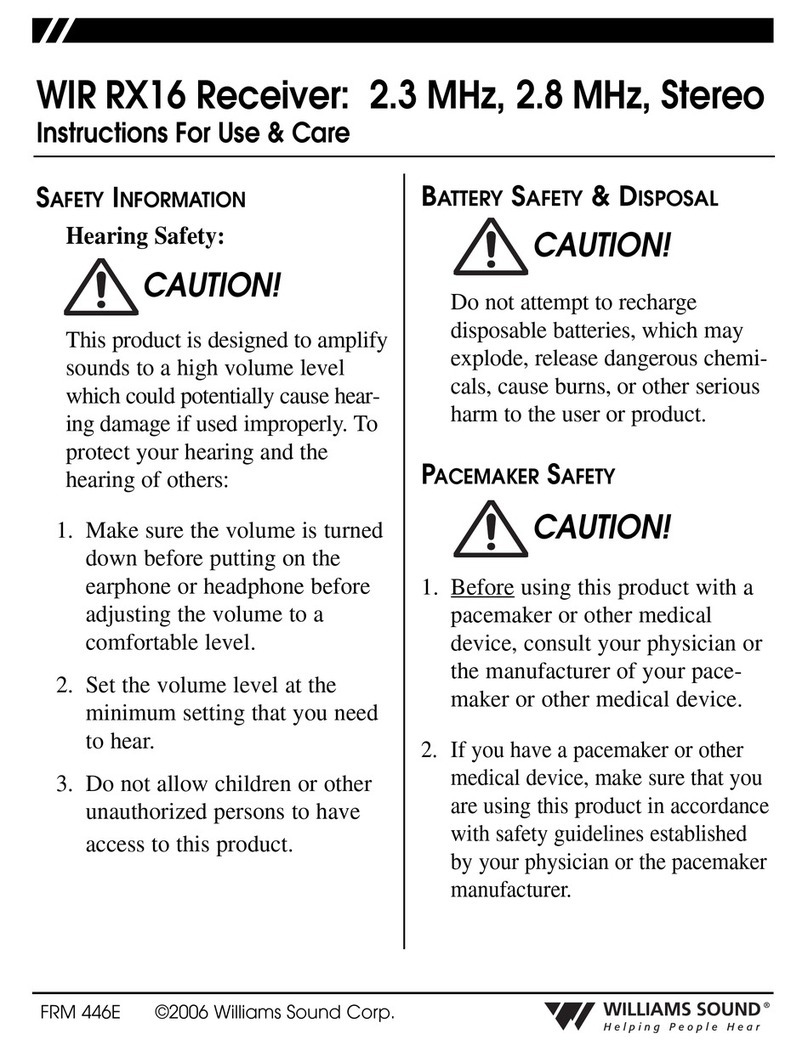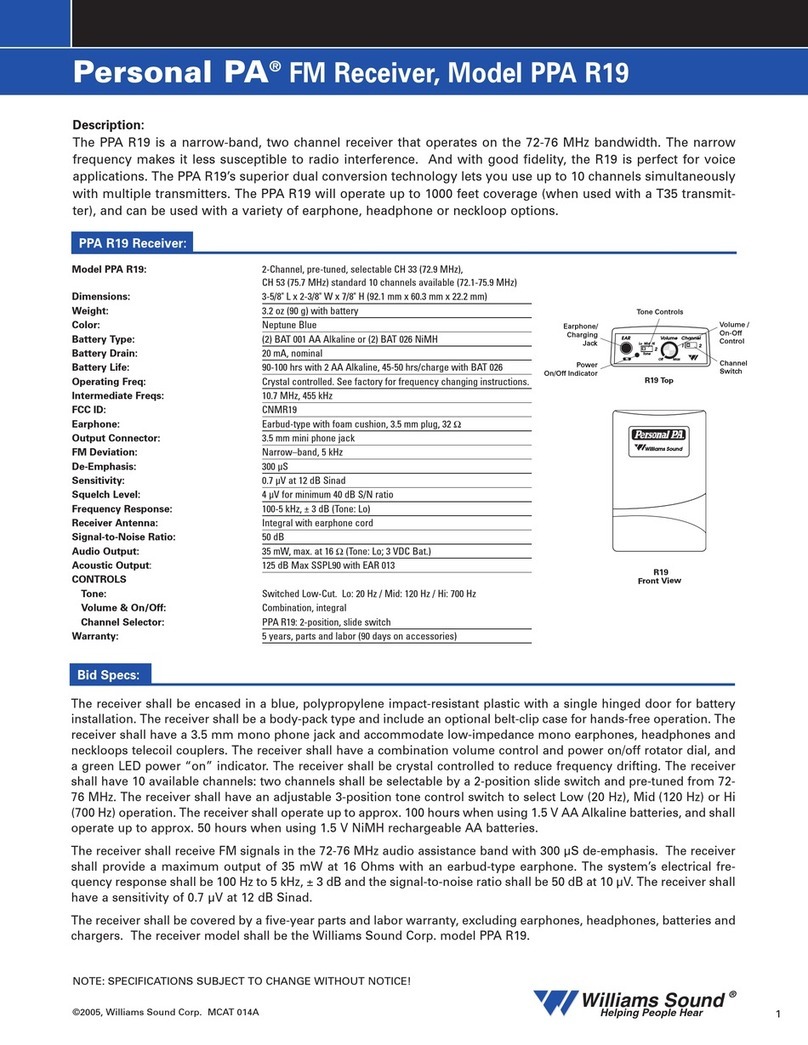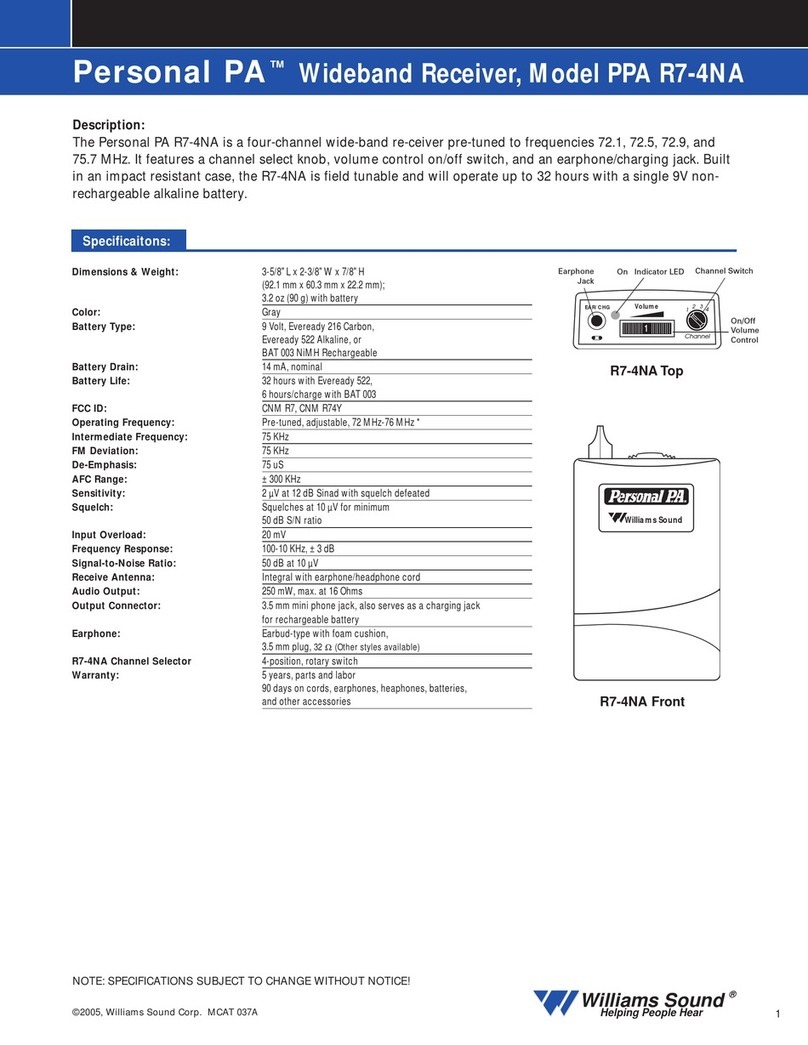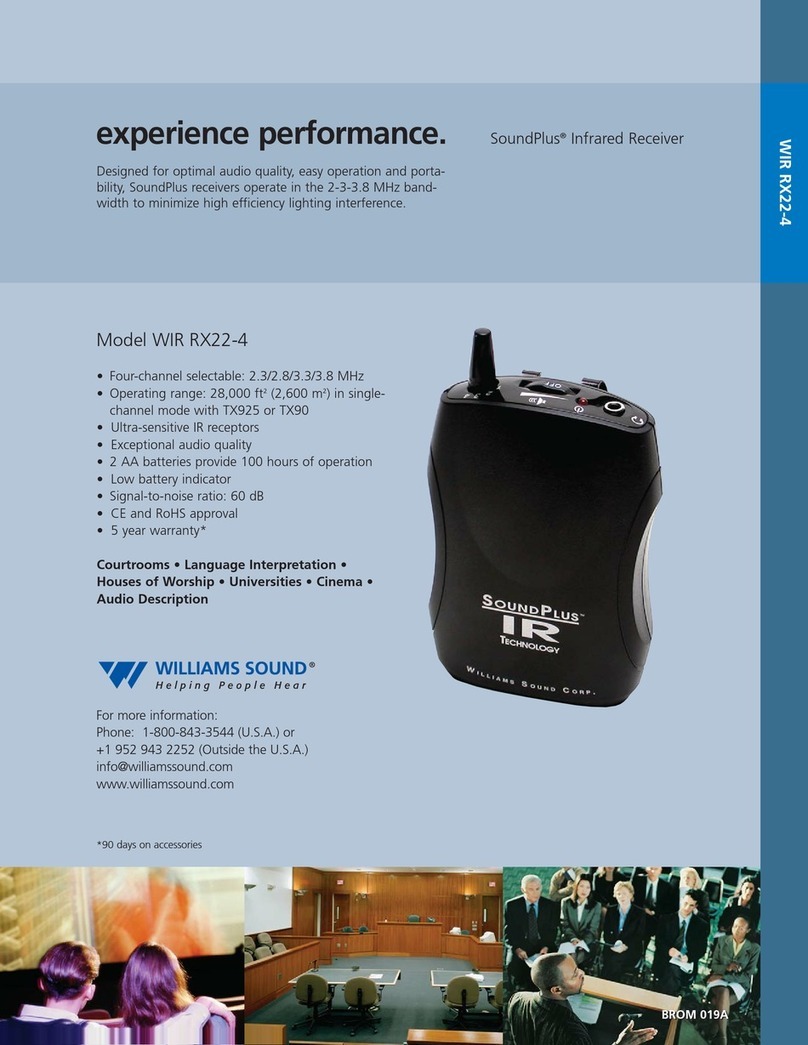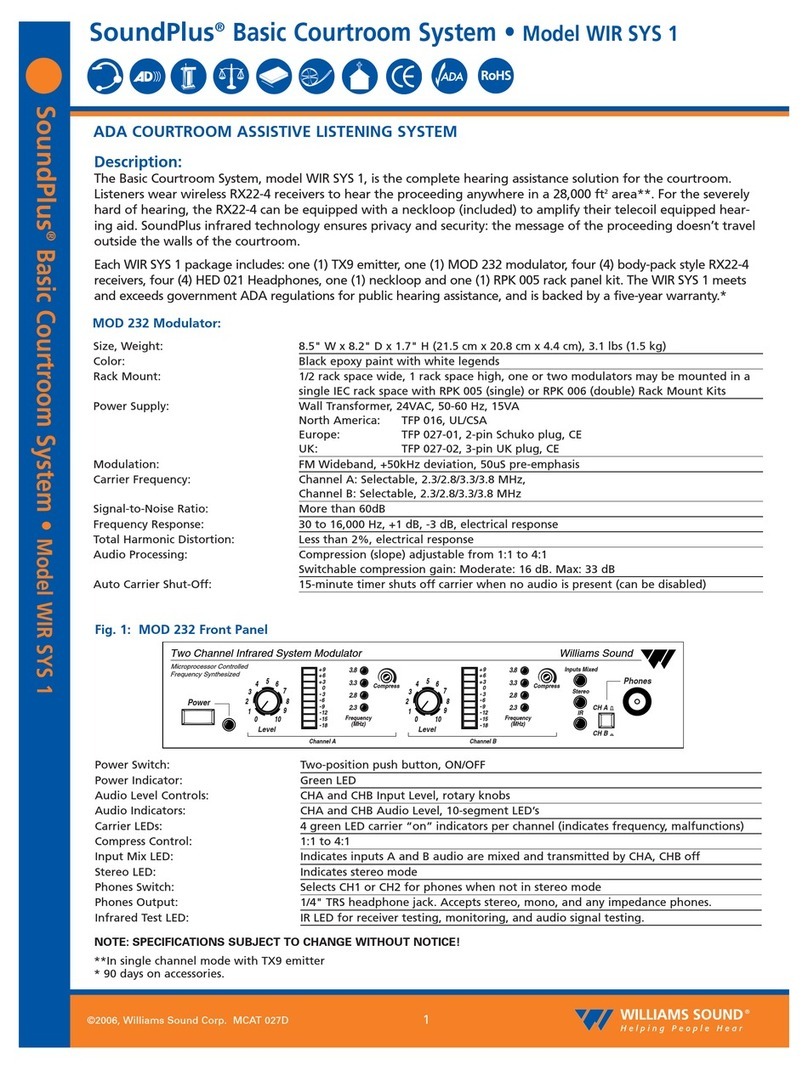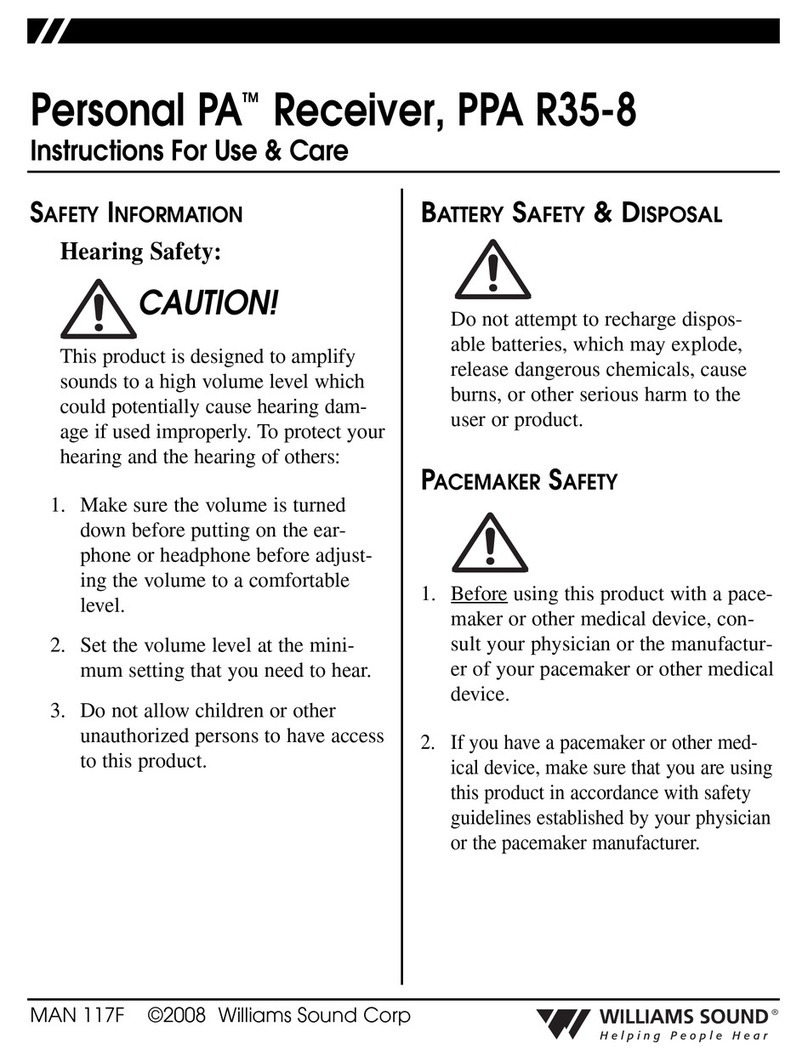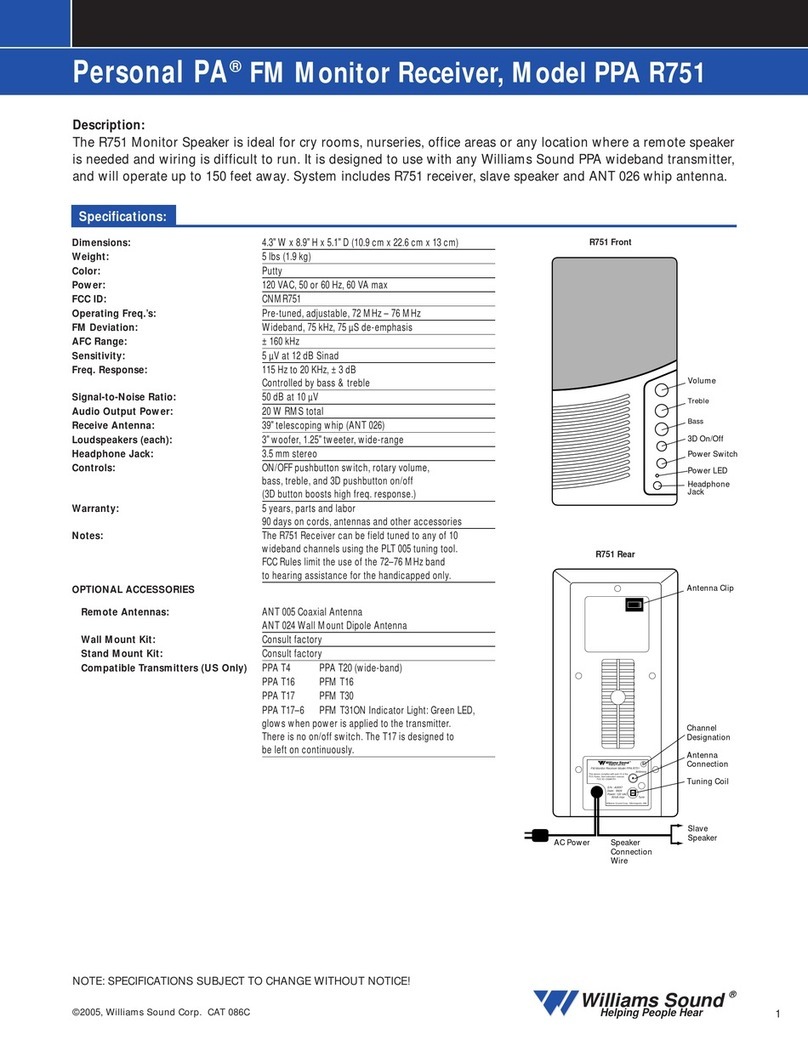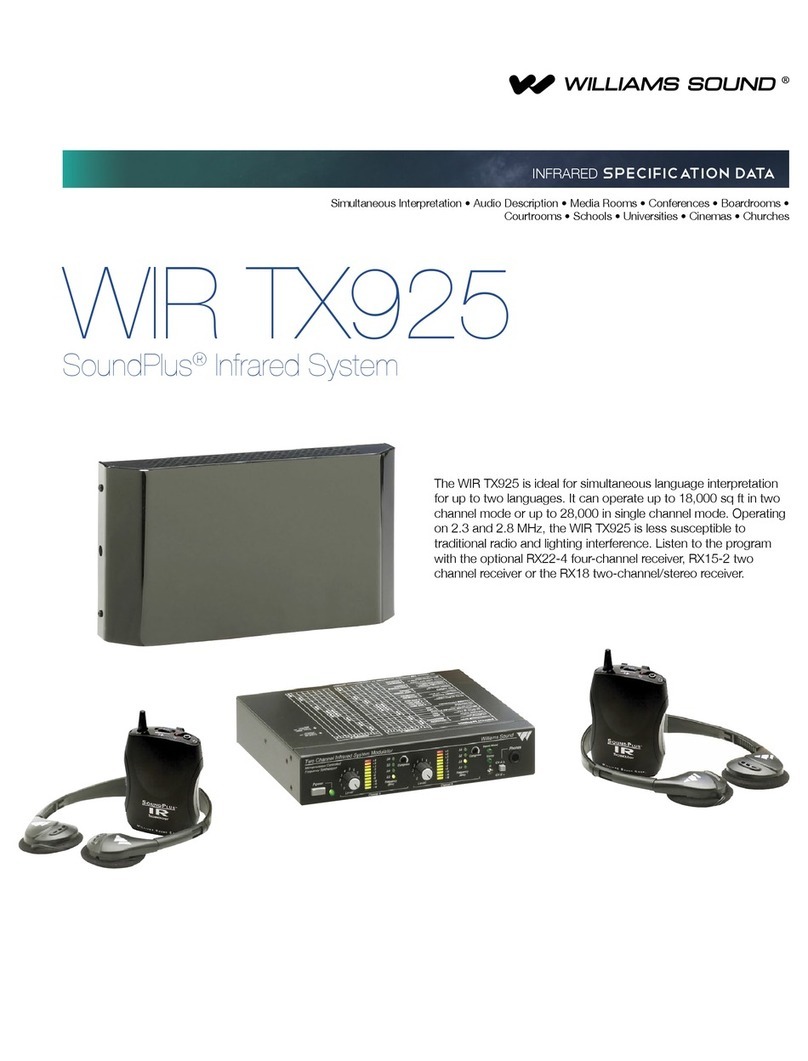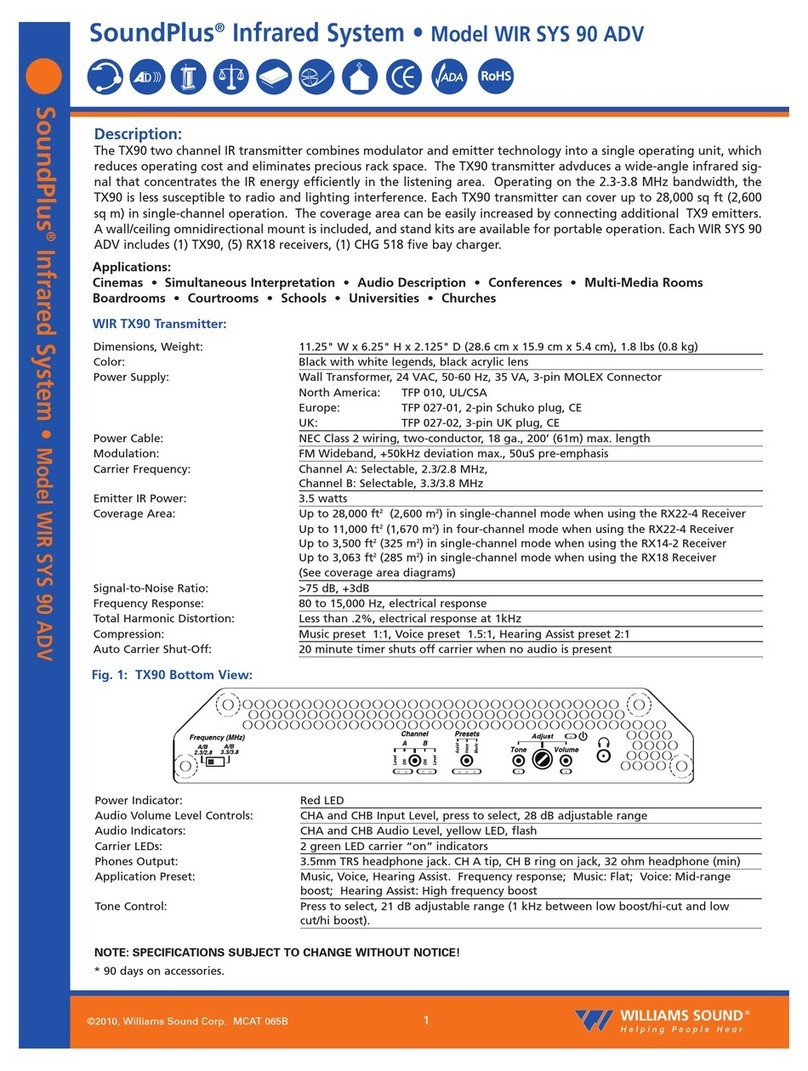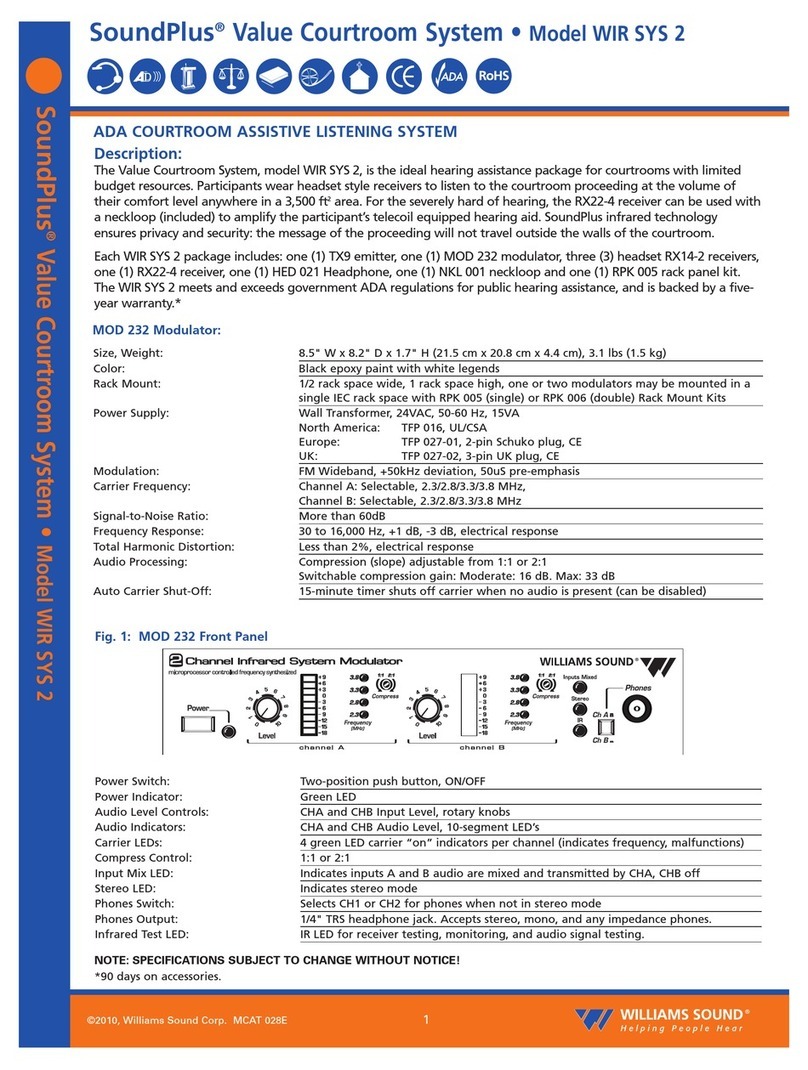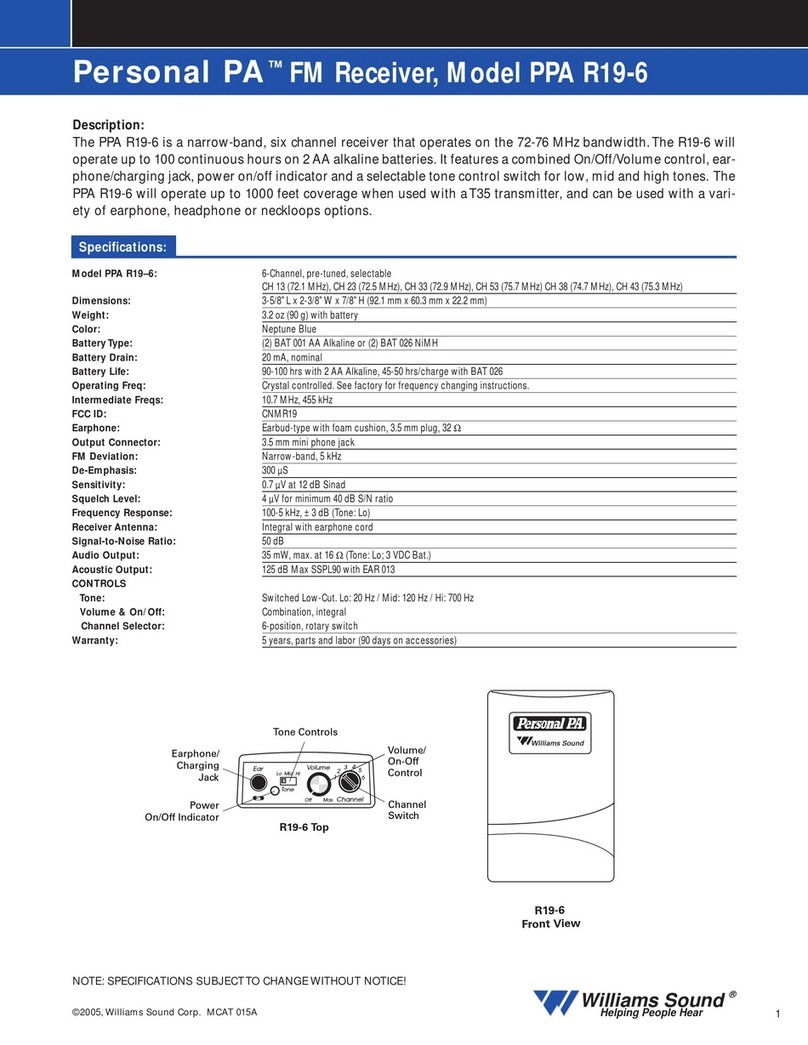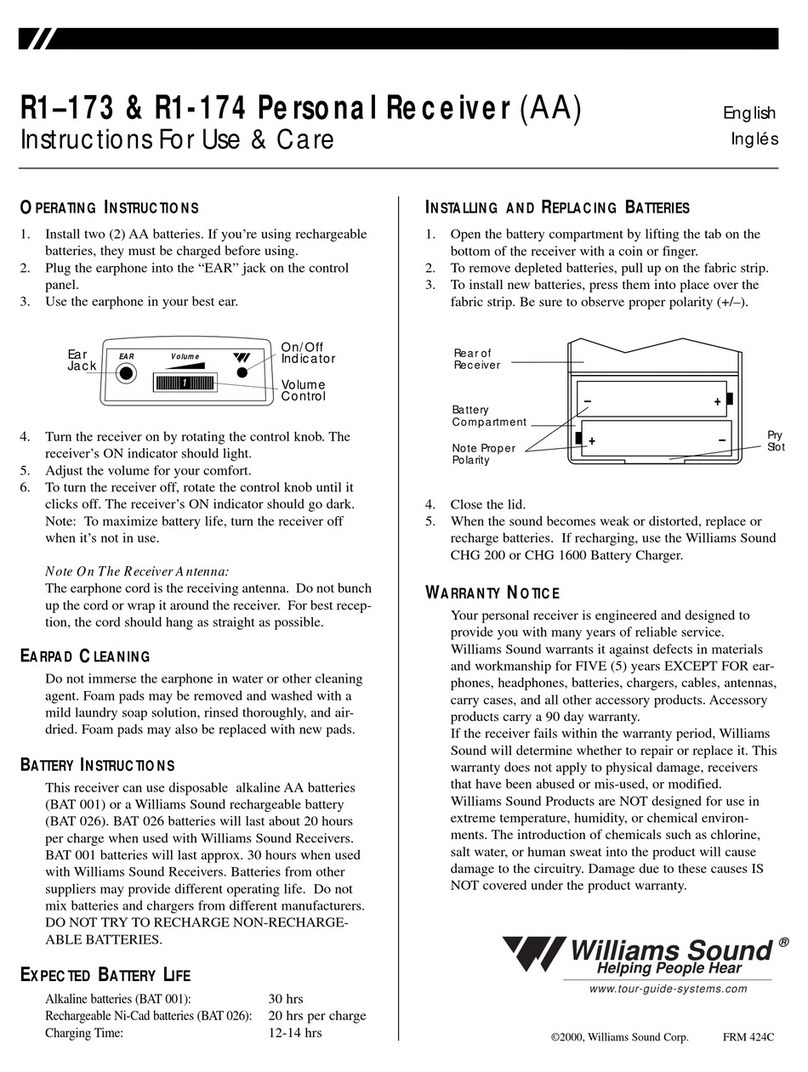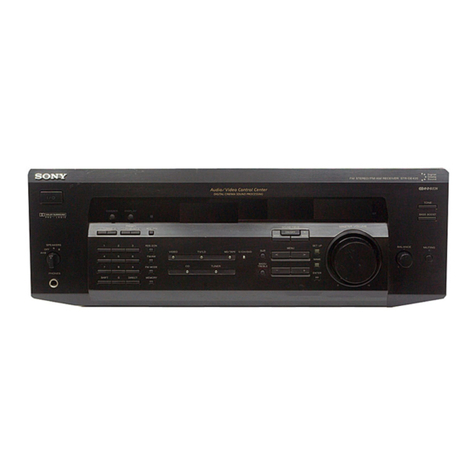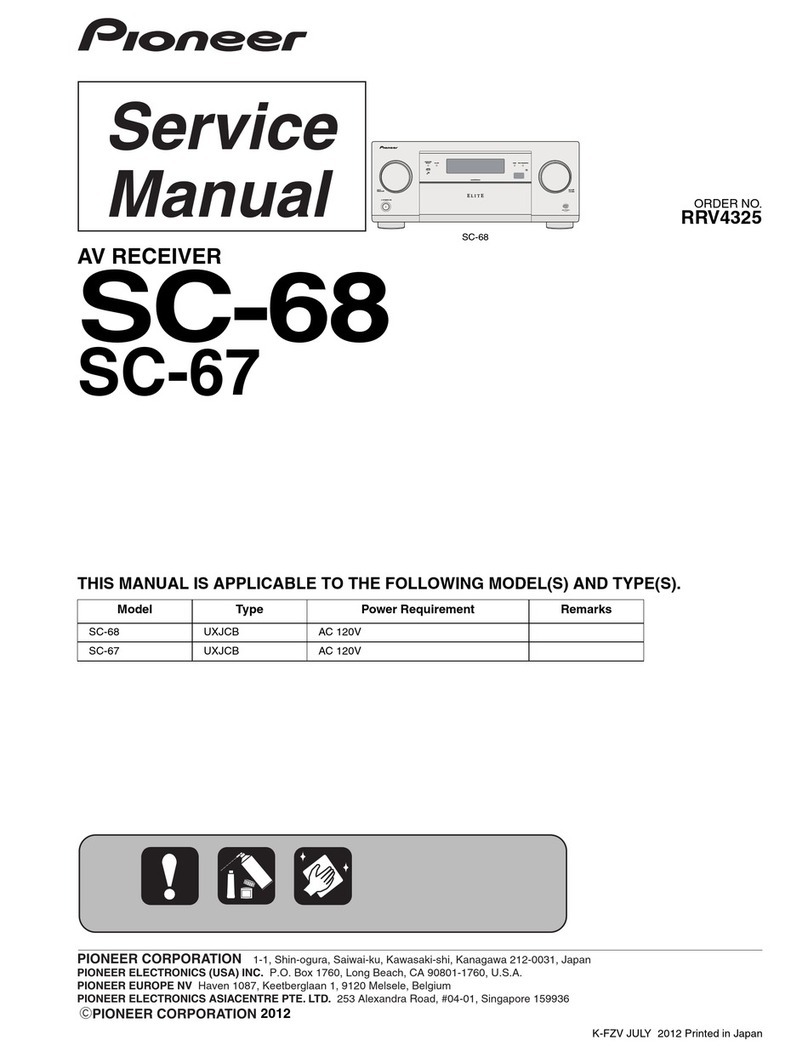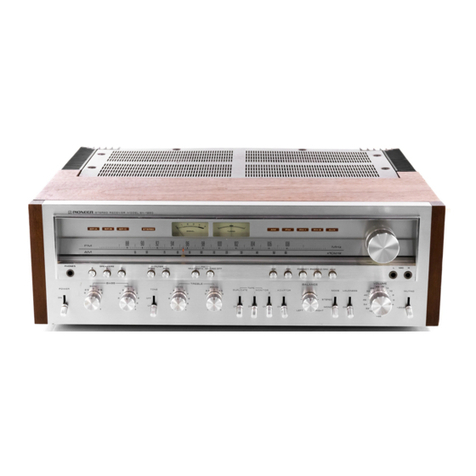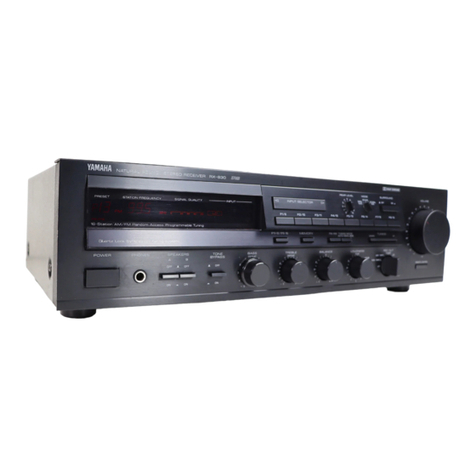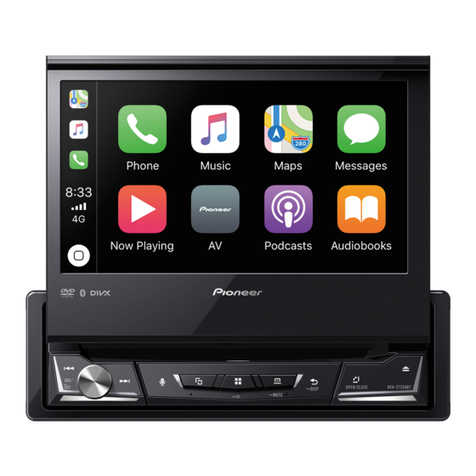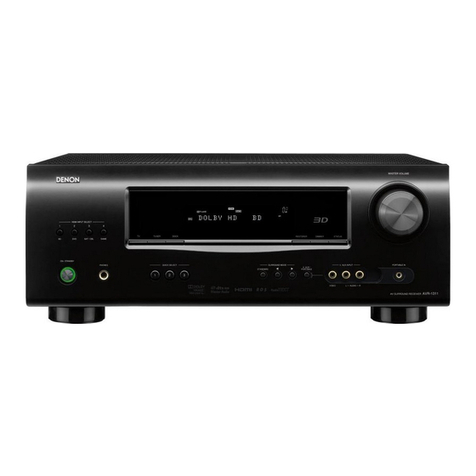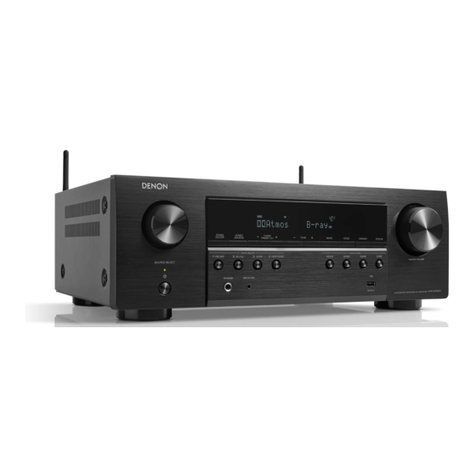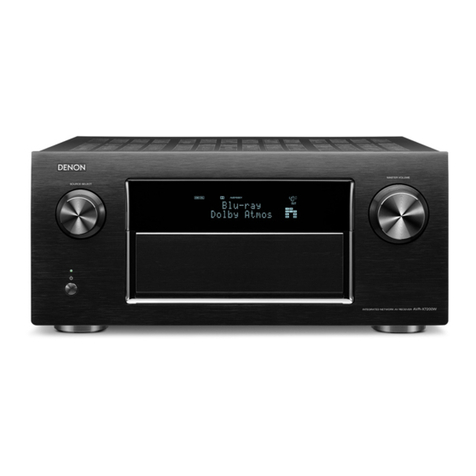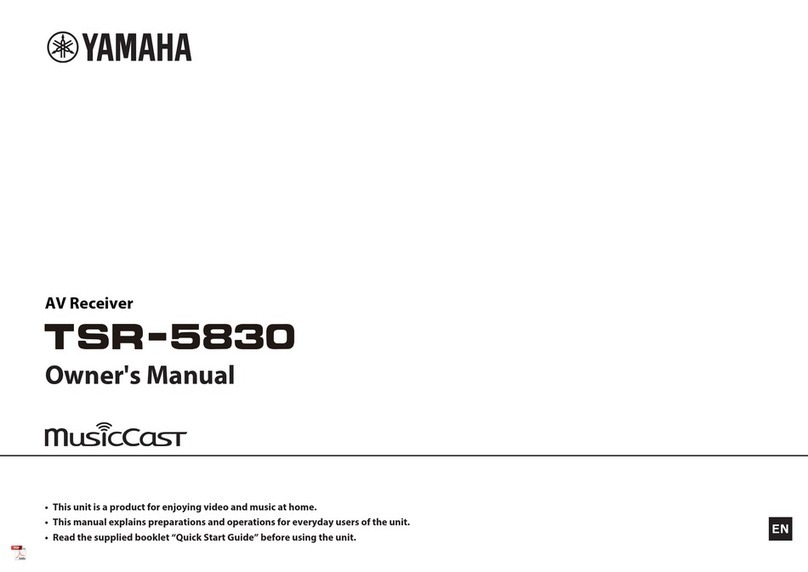Description:
The TX90 two channel IR transmitter combines modulator and emitter technology into a single operating unit, which
reduces operating cost and eliminates precious rack space. The TX90 transmitter produces a wide-angle infrared sig-
nal that concentrates the IR energy efficiently in the listening area. Operating on the 2.3-3.8 MHz bandwidth, the
TX90 is less susceptible to radio and lighting interference. Each TX90 transmitter can cover up to 28,000 sq ft (2,600
sq m) in single-channel operation. The coverage area can be easily increased by connecting additional TX9 emitters.
A wall/ceiling omnidirectional mount is included, and stand kits are available for portable operation.
Dimensions, Weight: 11.25" W x 6.25" H x 2.125" D (28.6 cm x 15.9 cm x 5.4 cm), 1.8 lbs (0.8 kg)
Color: Black with white legends, black acrylic lens
Power Supply: Wall Transformer, 24 VAC, 50-60 Hz, 35 VA, 3-pin MOLEX Connector
North America: TFP 010, UL/CSA
Europe: TFP 027-01, 2-pin Schuko plug, CE
UK: TFP 027-02, 3-pin UK plug, CE
Power Cable: NEC Class 2 wiring, two-conductor, 18 ga., 200’ (61m) max. length
Modulation: FM Wideband, +50kHz deviation max., 50uS pre-emphasis
Carrier Frequency: Channel A: Selectable, 2.3/2.8 MHz,
Channel B: Selectable, 3.3/3.8 MHz
Emitter IR Power: 3.5 watts
Coverage Area: 28,000 ft2(2,600 m2) in single-channel mode when using the RX22-4 Receiver
18,000 ft2(1,670 m2) in four-channel mode when using the RX22-4 Receiver
3,500 ft2(325 m2) in single-channel mode when using the RX14-2 Receiver
3,063 ft2(285 m2) in single-channel mode when using the RX16 Receiver
(See coverage area diagrams)
Signal-to-Noise Ratio: >75 dB, +3dB
Frequency Response: 80 to 15,000 Hz, electrical response
Total Harmonic Distortion: Less than .2%, electrical response at 1kHz
Compression: Music preset 1:1, Voice preset 1.5:1, Hearing Assist preset 2:1
Auto Carrier Shut-Off: 20 minute timer shuts off carrier when no audio is present
WIR TX90 Transmitter:
Power Indicator: Red LED
Audio Volume Level Controls: CHA and CHB Input Level, press to select, 28 dB adjustable range
Audio Indicators: CHA and CHB Audio Level, yellow LED, flash
Carrier LEDs: 2 green LED carrier “on” indicators
Phones Output: 3.5mm TRS headphone jack. CH A tip, CH B ring on jack, 32 ohm headphone (min)
Application Preset: Music, Voice, Hearing Assist. Frequency response; Music: Flat; Voice: Mid-range
boost; Hearing Assist: High frequency boost
Tone Control: Press to select, 21 dB adjustable range (1 kHz between low boost/hi-cut and low
cut/hi boost).
©2008, Williams Sound Corp. MCAT 064A
1
Applications:
Cinemas • Simultaneous Interpretation • Audio Description • Conferences • Multi-Media Rooms
Boardrooms • Courtrooms • Schools • Universities • Churches
Fig. 1: TX90 Bottom View:
NOTE: SPECIFICATIONS SUBJECT TO CHANGE WITHOUT NOTICE!
* 90 days on accessories.
